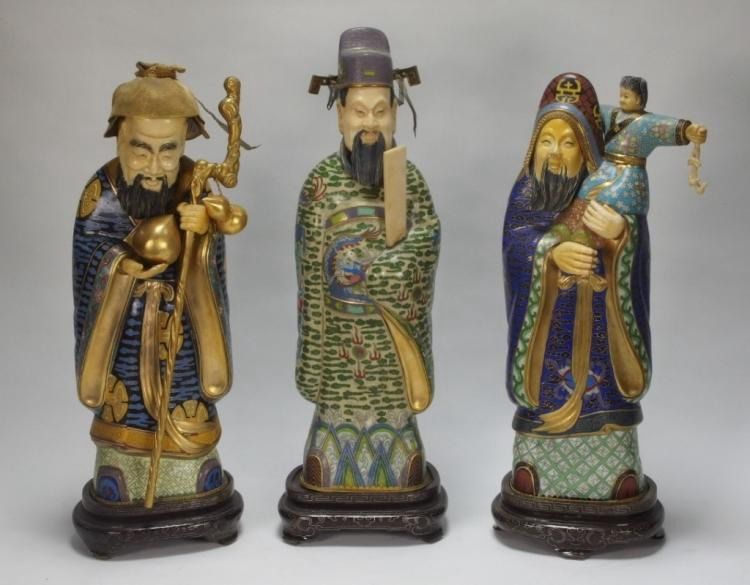
One of the most commonly collected collectibles is figurines. They come in countless varieties and span many various media and historical periods. Chinese and oriental figurines are among the most well-known types of figurines that people collect.
Due to China’s long and rich history, figurines have been made there for long periods of time. These figurines were created over time by artisans using a variety of materials and design techniques. As a result, it can occasionally be difficult to determine the origins and originality of Chinese figurines.
Do you wish to learn more about Chinese figurine identification in order to begin collecting them? Maybe you came across some antique oriental figurines and want to sell them but are unsure if they are real. In either way, your luck is in! This article will look in-depth at Chinese figurines, including how to recognize them and determine their worth.
Table of Contents
What are Chinese Figurines?
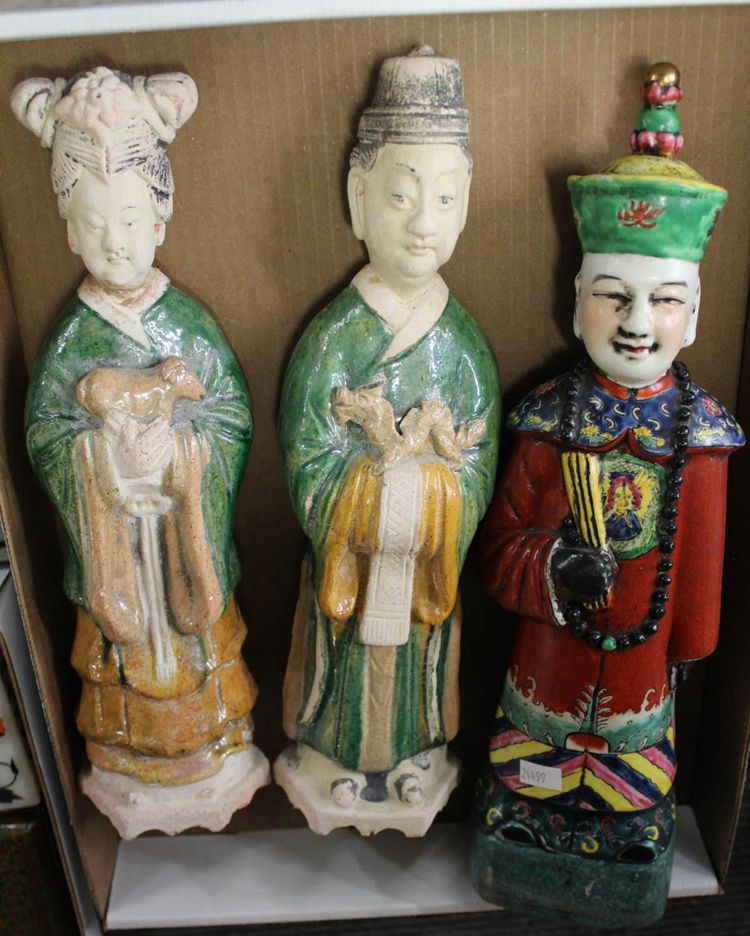
An abbreviation for the word figure is “figurine.” Chinese figurines, also known as oriental figurines, are decorative sculptures that were made in China by skilled artisans.
Typically, these miniatures show a single person, a group of people, or a variety of animals in commonplace settings. Metal, clay, and other materials, as well as many more, can be used to create them. Plastic or resin figures are now, however, the most popular kind.
Chinese figurines have existed throughout the several dynasties that produced Chinese emperors in a variety of forms. While some were constructed with durable materials by beginner craftsmen, others were produced by highly skilled artisans using expensive materials.
Origin of Figurines
Shiwan has earned the prestigious title of “Porcelain Capital of Southern China” thanks to its lifelike ceramic sculptures. Shiwan, a town southwest of Foshan, has a long and rich tradition of ceramic sculpting dating back 5000 years. About 40% of China’s and 25% of the world’s ceramic production capacity comes from Shiwan. Shiwan ceramics were made for both practical use and artistic purposes and were primarily produced in accordance to social and economic necessities.
Cultural artifacts found in Shiwan’s East Han tombs were where the earliest Shiwan ceramic sculptures were discovered. Prior to the Ming era, it was regularly improved upon, reaching its apogee during the Ming and Qing dynasties. Shiwan’s porcelain artwork will subsequently suffer a setback in China’s Republican Period. Though it continued to flourish through innovation following the creation of the People’s Republic. Shiwan pottery has a long history, although the traditional pieces typically have commonplace designs, while very individualistic pieces were seen as rare.
Shiwan pottery typically has a humanistic, regional, and national aesthetic because of its distinctive artistic style. Figurines are among Shiwan Potter’s most notable successes. Figurines are being produced in a wider range of subjects, such as history, folklore, and other well-known literary works, as opposed to just religious figures.
The slightly exaggerated facial expressions of the figures, which reflect potters’ attempts to represent the distinctive personality of their subjects, contribute to their popularity. The figurines were remarkable because the potters, who were greatly influenced by Chinese opera, were able to convey the character’s essence through the figurines’ face and physical expressions. Large numbers of sculptures of icons and goddesses of gates were created to embellish temples and other buildings as there was an increasing need to satisfy the demands of religious activities.
Types of Antique Chinese Figurines
Chinese or you can say Oriental figurines, which typically feature an animal or a human figure, give modern collectors an opportunity to feel a connection to the past. The following are among the most popular materials and motifs, though they differ depending on the time period and place where the artwork was made.
-
Precious Natural Materials Figurines
Ivory, tiger’s eye, Jade, coral, and other valuable or semi-precious materials are used to create a variety of exquisite oriental sculptures. Usually made by hand, these figures may or may not have had color applied to them to improve the appearance.
Asian figural art frequently utilized soapstone as a medium. The carvings, which include both human and animal representations, are from various places and times.
Oriental figurines were frequently made of ivory, despite the material’s current ban on use in new works. These antique ivory items, if genuine, can be very expensive. Some of these stunning objects are depicted on Antiques Roadshow, along with information about the auction prices these items brought.
-
Porcelain and Ceramic Figurines
Figurines made of porcelain, clay, or ceramic have been crafted by Asian artisans for hundreds or thousands of years. Usually, the desired shape of these figurines was cast, and the final details were hand-carved. Often, glazes applied in layers heighten their beauty. Among the more notable types are some of the following:
- Japanese clay figurines (dogu) – 10,000 BCE to 300 BCE
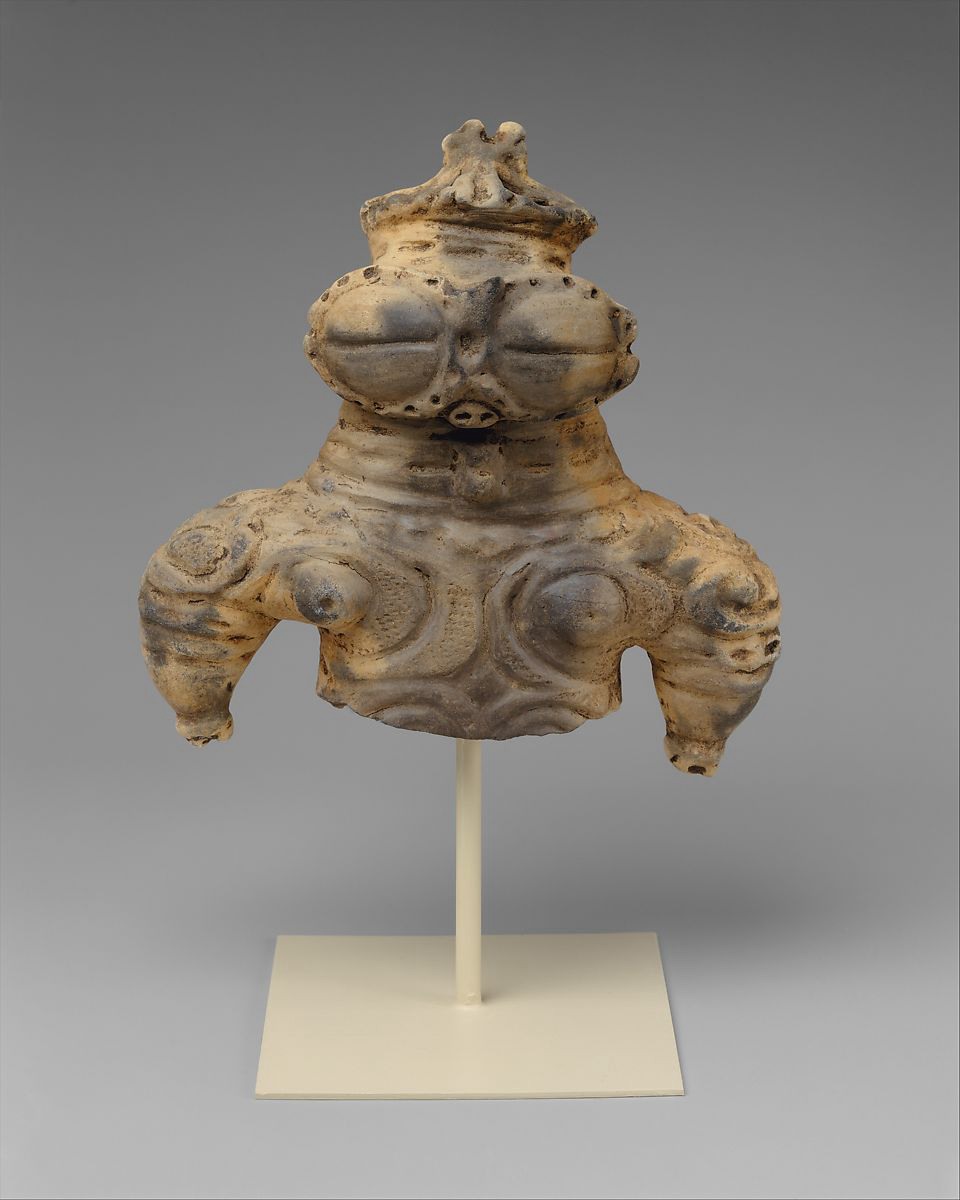
1000–300 BC
Japan(Source: Metmuseum)
- Burial figurines (Tang dynasty) – 681 to 907 CE
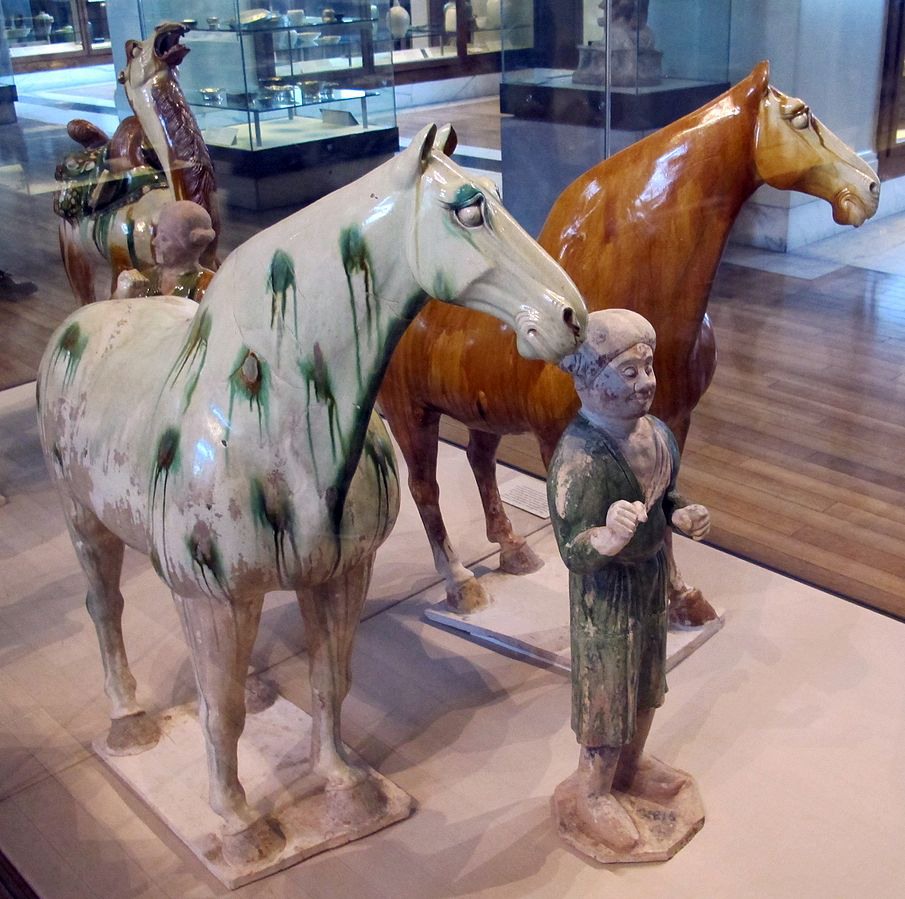
- Female form figurines (Han dynasty) – 206 BCE to 220 CE
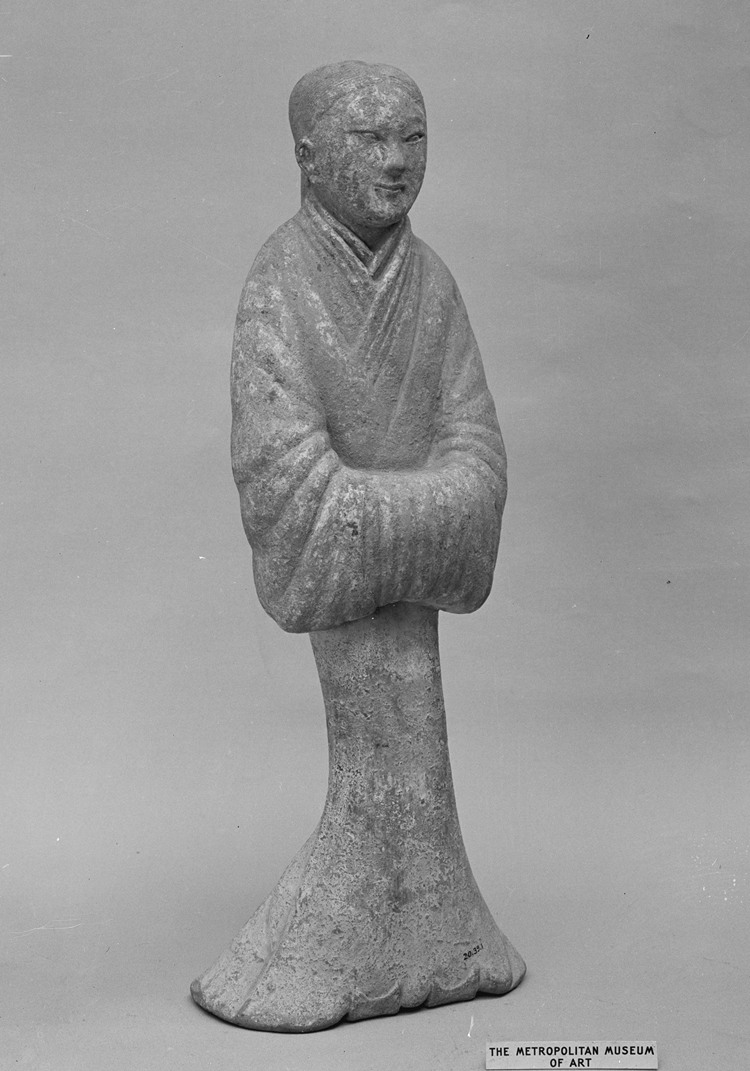
- Guanyin figurines – 100 BCE and 600 CE
Material used for the manufacture of Chinese Figurines
Clay and expensive natural materials like ivory and jade were used most frequently to produce Chinese sculptures. Although it is today forbidden to use certain materials for sculptures, ivory was formerly quite popular.
Beautiful ivory figurines were handcrafted by artisans, and to make them more appealing, colors were added. These sculptures were frequently used as decorations and often featured the Chinese Emperor.
But clay remained the most widely used substance for making Chinese sculptures. Depending on its fineness and the baking temperature, clay could be transformed into a variety of materials, including Chinese ceramic or Chinese porcelain.
Popular Styles of Chinese Figurines
Chinese figurines in well-known designs include:
-
Dehua Porcelain Figurines
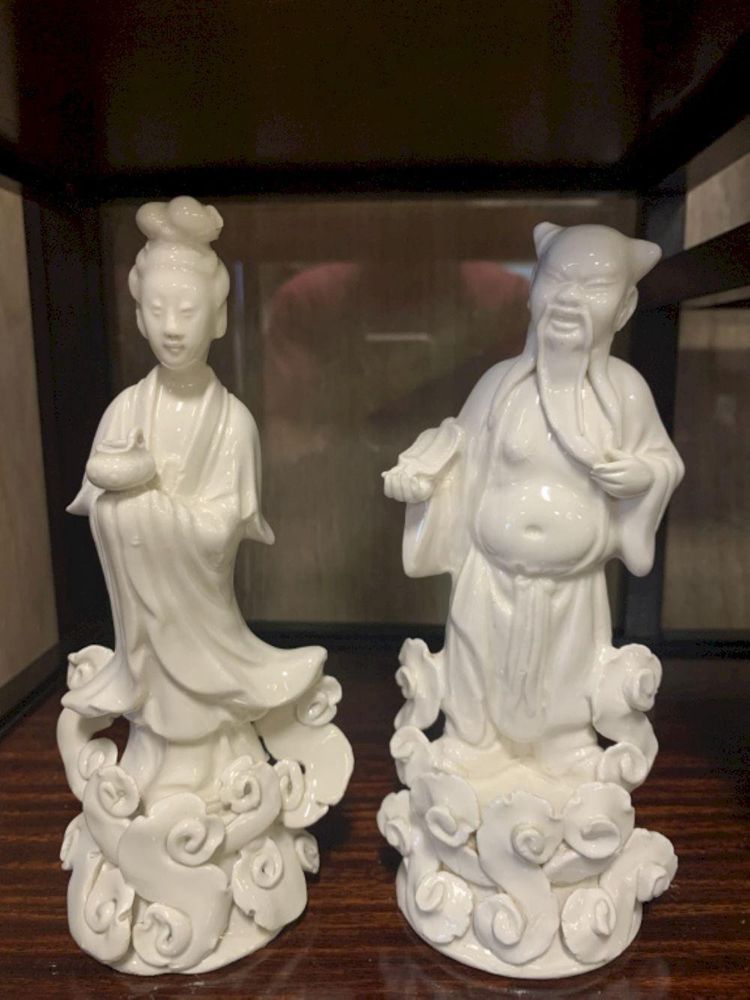
In general, China is well recognized for its porcelain goods. A highly well-liked variety of porcelain is Dehua porcelain, sometimes referred to as Blanc de Chine (white China) in French. Figurines were often made from this white porcelain, which came from the Fujian province city of Dehua.
During the Ming era, Dehua porcelain figurines were famous in China. They ultimately made it during the 18th century in Europe. Because of the material’s distinctive appearance, imitations of it were made at France, Saint-Cloud, England, and London.
-
Mudmen Figurines
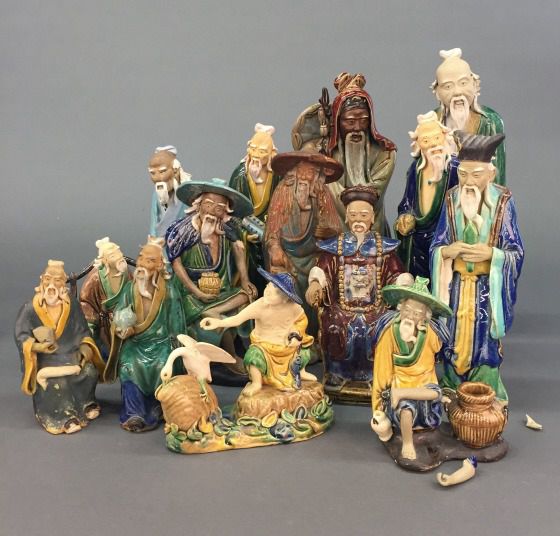
Mud figurines gained popularity during the Manchurian Ch’ing Dynasty because they stood out from other sculptures. These mudmen figurines required a lengthy construction procedure that frequently involved many persons from the same hamlet. Once the rice harvesting season was done, many people’s economies centered around these miniatures.
Typically, these figurines showed men holding pots, flutes, or scrolls. A single craftsperson could easily and swiftly create the smaller miniatures. The larger ones, however, needed unique molds for every component. Artists would glaze the figurines with various colors to give them more life once the molding process was complete and the clay had been baked.
-
Huishan Clay Figurines
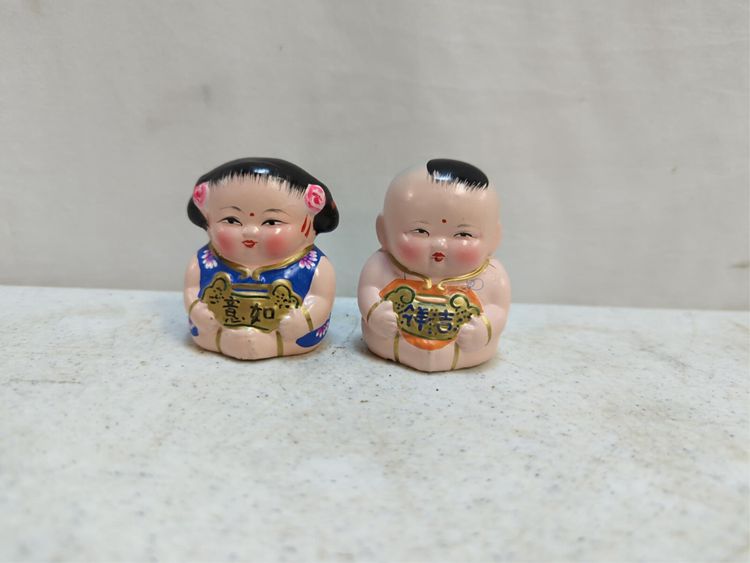
Huishan clay figures, which were common during the Ming and Qing eras, are one of the most well-known varieties of Chinese clay figurines. They were little, spherical sculptures with distinguishable features and vivid colors.
This particular type of black mud, which can be found on the foothills of Huishan Mountain’s northeast slope, was used to make the clay figurines. There are two main types of Huishan figurines: coarse Huishan figurines, which had huge heads and tiny bodies, and sensitive Huishan figurines, which were more beautifully created and had superior proportions.
Identification of Chinese Figurines
For many centuries, Chinese figurines were produced in large quantities. It can be difficult to determine where they originated because they flooded into the western regions of the planet at the same time.
Additionally, because they gained popularity quickly in the West, some artisans started making imitations or fakes and presenting them as genuine China figurines. As a result, it might be difficult for people to tell whether a Chinese figurine is real and where it came from.
Your best course of action is to seek professional assistance if you have any old figurines that resemble Chinese objects. A qualified appraiser can accurately identify the figurine and provide you with more information.
Here are the few factors that can help you to identify your antique Chinese figurines:
-
Examine Patina for authentication
An antique Chinese figure will undoubtedly have some sort of patina. Finding one of these figures in perfect condition is nearly impossible because they can be hundreds of years old. If you do, it’s probably a replica made today. However, to deceive people, imitation painters also add fake patina to their works. Keep in mind that a piece’s patina is greatly influenced by its environment. An outdoor figurine, for instance, need to show symptoms of weather exposure. The patina marks on a piece are also fake if they may be removed with a simple moist cloth.
-
Hallmarks/Symbols
Figurines made of china frequently have particular markings at the bottom. These could be a maker’s mark or markings that identify the item’s materials or origin. However, because they frequently contain unique Chinese symbols, these marks can occasionally be challenging to read. However, if a vintage figurine has any blemishes, you should seek them up online since they can be useful for identification.
-
Marks of the Craftsman
Since most little Chinese figurines are handcrafted, it is normal for them to have distinctive marks that reveal the maker’s hand. It should be obvious if you have a genuine handmade Chinese figurine since things like chisel marks from carving stoneware or fingertip imprints on clay cannot be imitated.
How can I find value of my Antique Chinese Figurine?
Similar to the identification procedure, determining the worth of figurines can be difficult, thus it is advisable to have a specialist appraise them. However, a few common features are there that might impact the value of Chinese figurines:
-
Age
The general belief when it comes to collectibles, such as vintage Chinese figurines, is that the older the item, the more valuable it is. Due to the long production history of antique Chinese figurines, some eras’ designs will be more well-known or popular than others.
-
Condition
A used item’s condition typically plays the biggest role in determining its worth. Naturally, antique artifacts should show indications of aging, especially if they are centuries old or have undergone extensive use.
However, indications of normal aging differ from those caused by abuse or poor maintenance. Chipped or cracked antique figurines are regarded as being in poor condition and will be considerably less expensive. Chinese antiques’ value might also be significantly impacted by missing components or the authentic packaging.
-
Rarity
The scarcity and market value of an antique artifact are typically used to assess its rarity. Something must be extremely sought-after or challenging to locate in order to be deemed rare and valuable. Some Chinese figurines, such those made of ceramic, could be easier to find than the rare and highly prized jade or ivory figurines.
List of 15 Most Valuable Chinese Figurines
Here are the 15 most valuable Chinese figurines that helps you to understand your collectible value or worth:
1. Antique Chinese Tea Stained Bone Carved Guanyin Figurine together with Two Chinese Wood Carved Buddha Figurines sold for $100
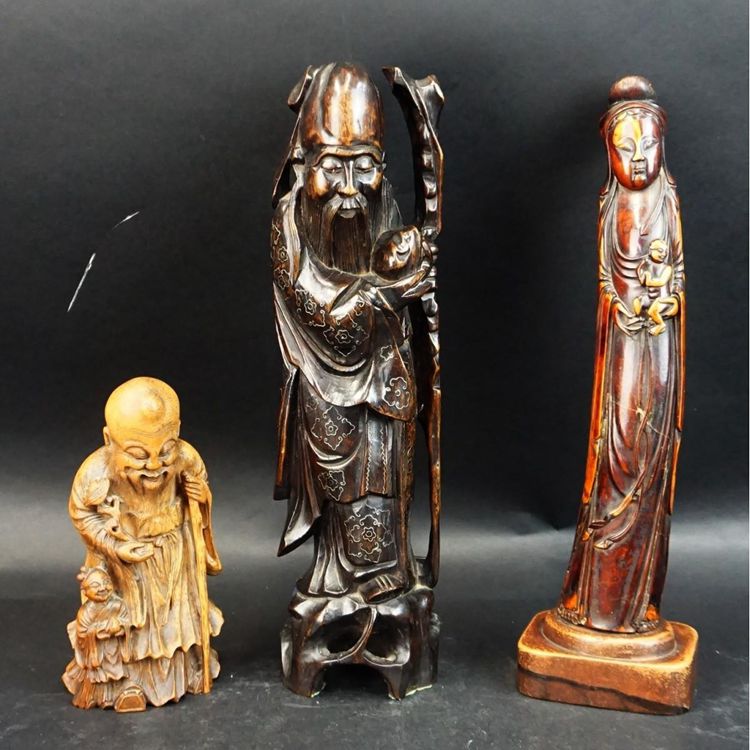
2. 4 Chinese Figurines. One is of the Emperor, 2 scholars, and 1 temple priest sold for $110
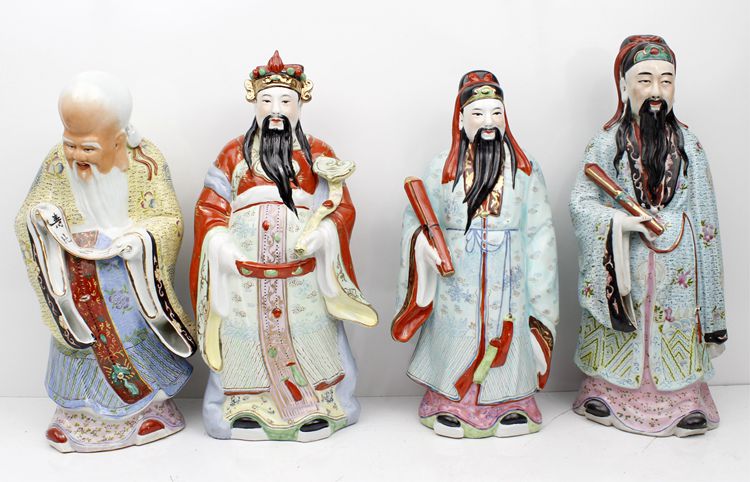
3. 2pc Mottahedeh Porcelain Nodding Chinese Figurines sold for $170
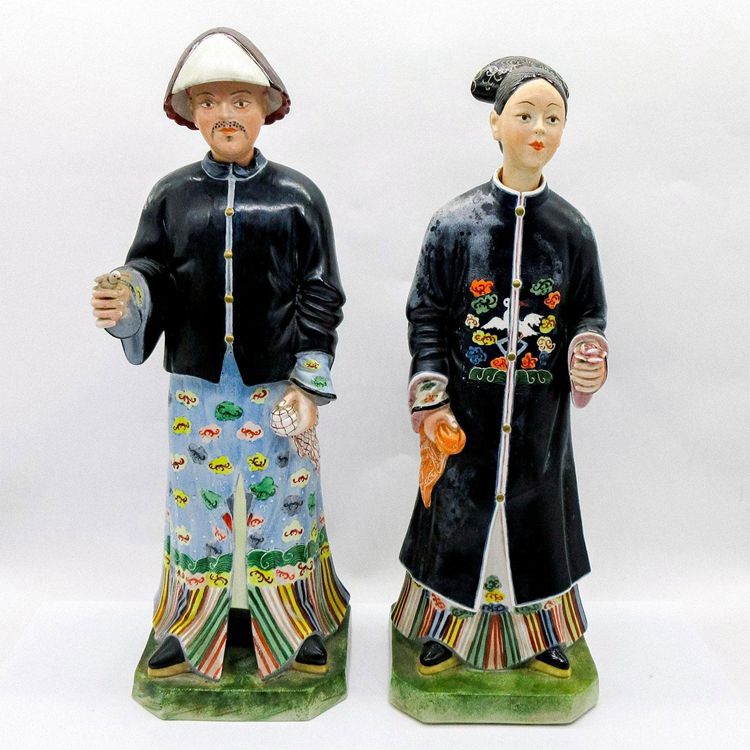
4. Antique Chinese Carved Guanyin Figurine along with an Antique Chinese Carved Immortal Figurine sold for $150
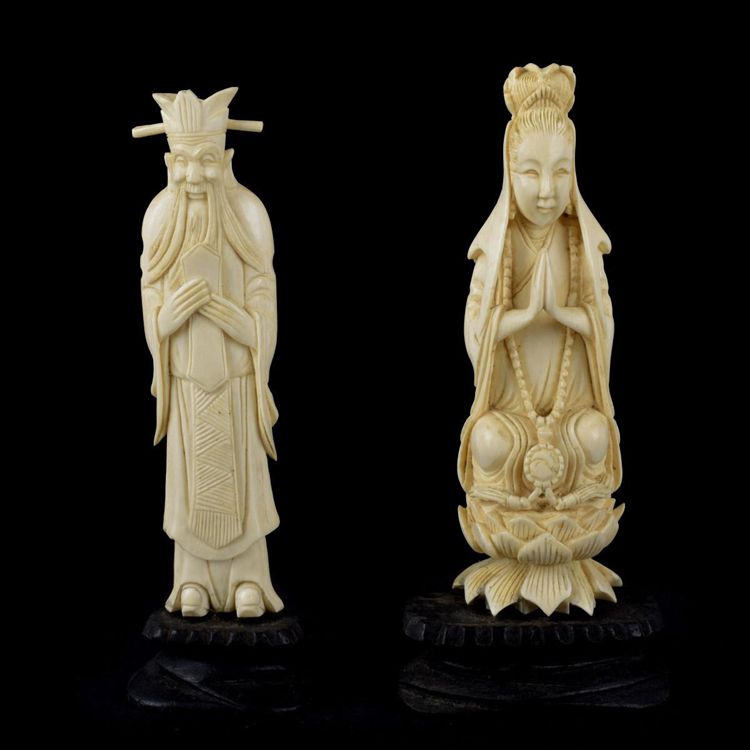
5. Pair of Chinese figurines – one of a lady and one of a gentleman, carved resin design sold for $238.52
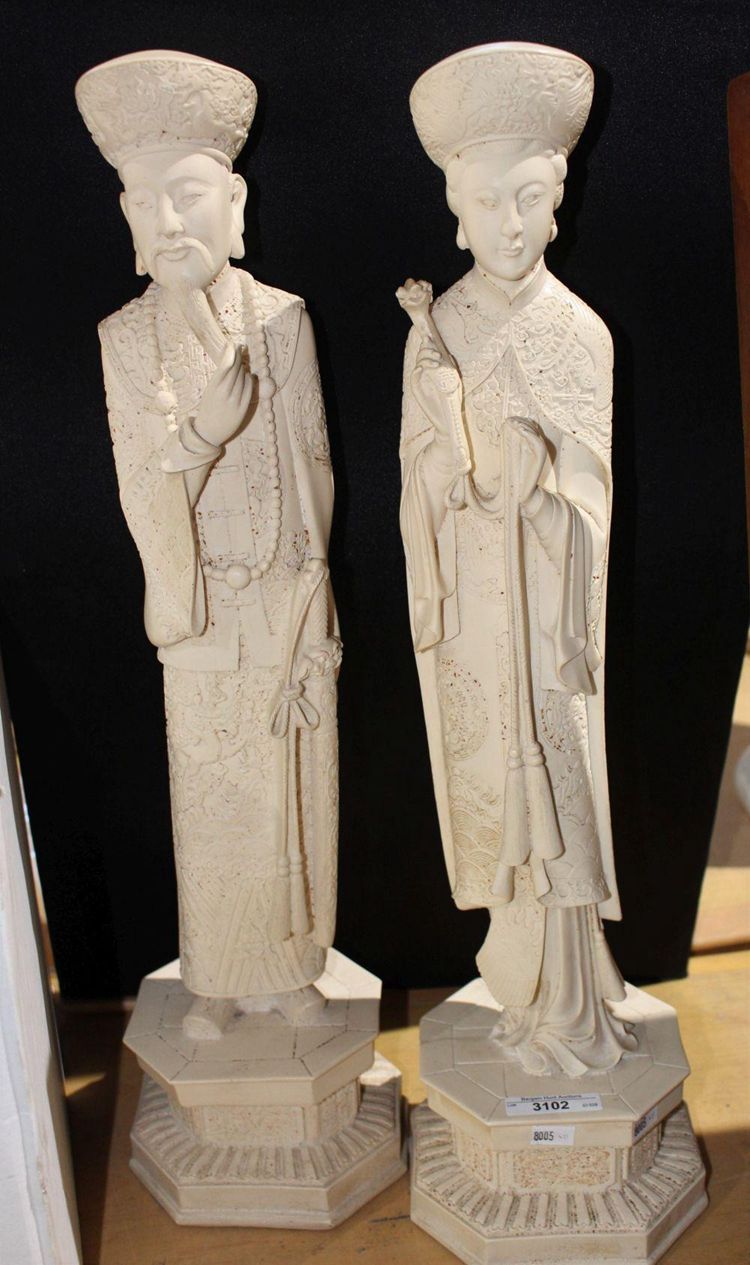
6. 3 Antique Chinese Polychrome Figurines sold for $150
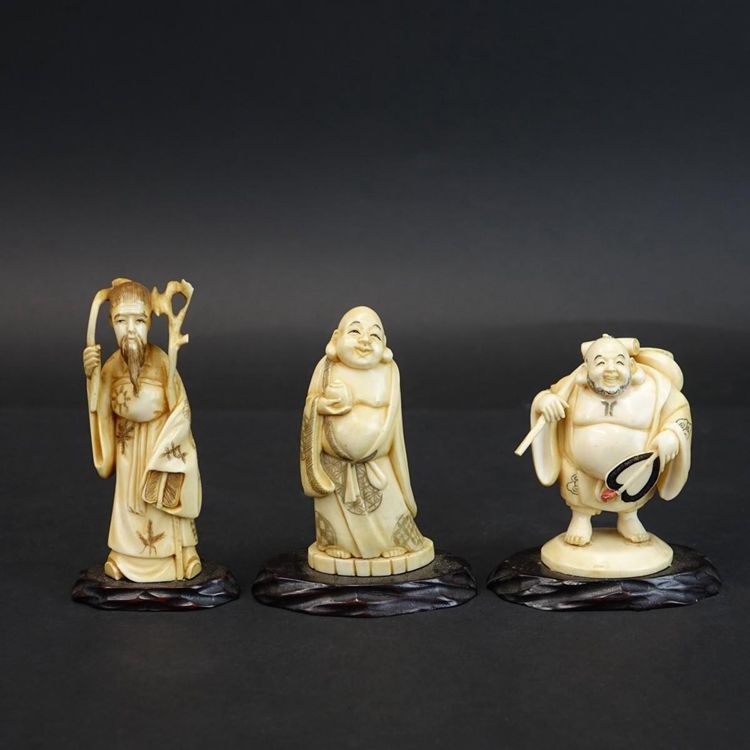
7. 7 Chinese Pottery Mudmen Figurines sold for $250
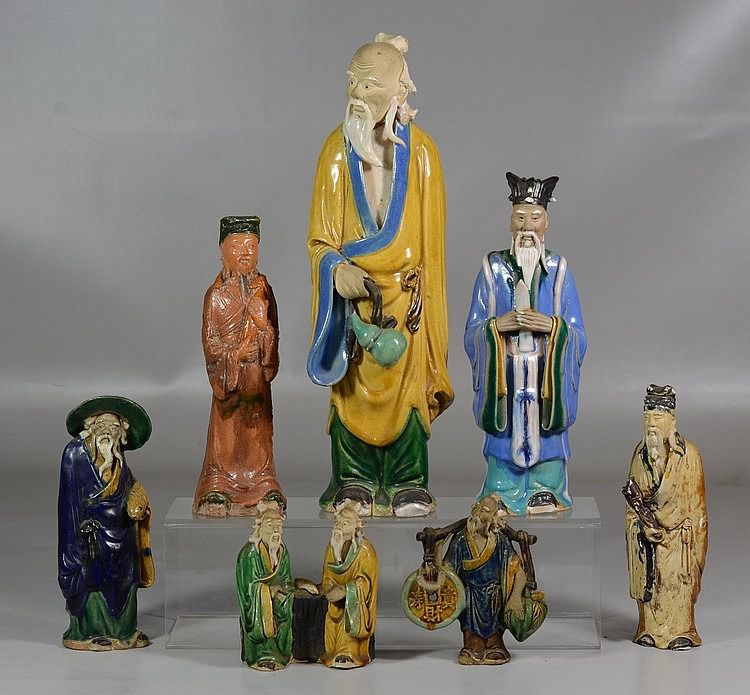
8. A DEHUA PORCELAIN FIGURINE OF YUE FEI, REPUBLIC PERIOD sold for $58
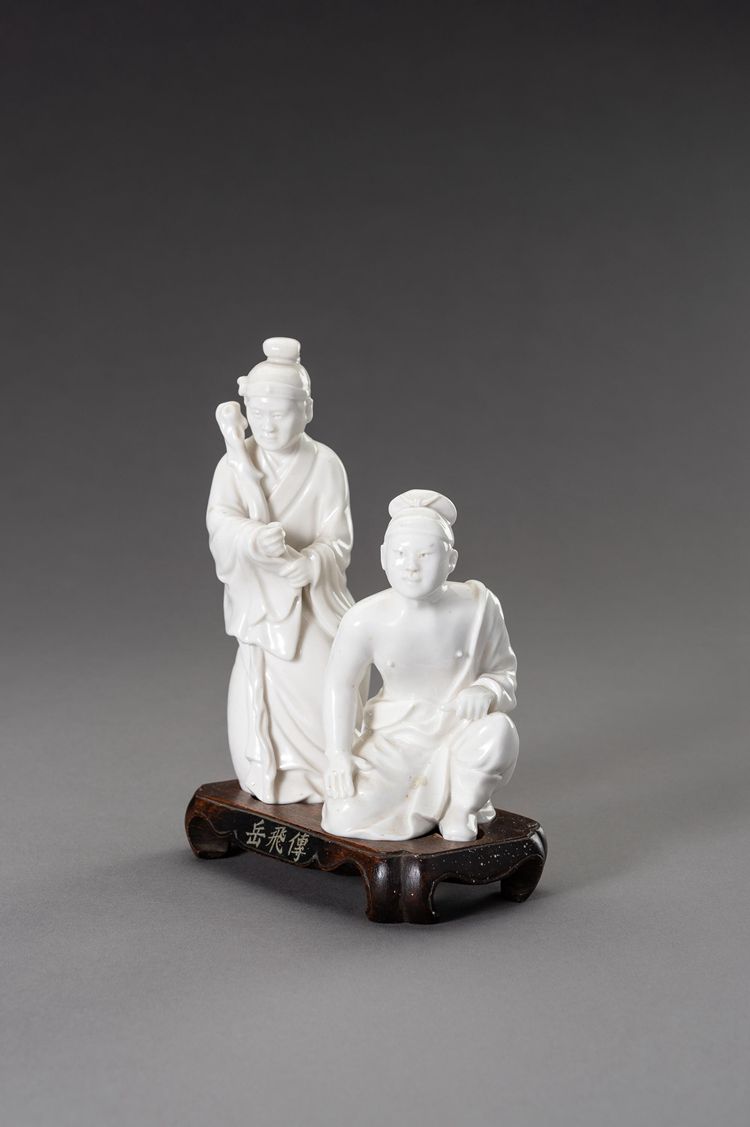
9. Antiques Qing China Chinese Agate Carving Buddha Figurine Lotus Meditation sold for $1,499.00
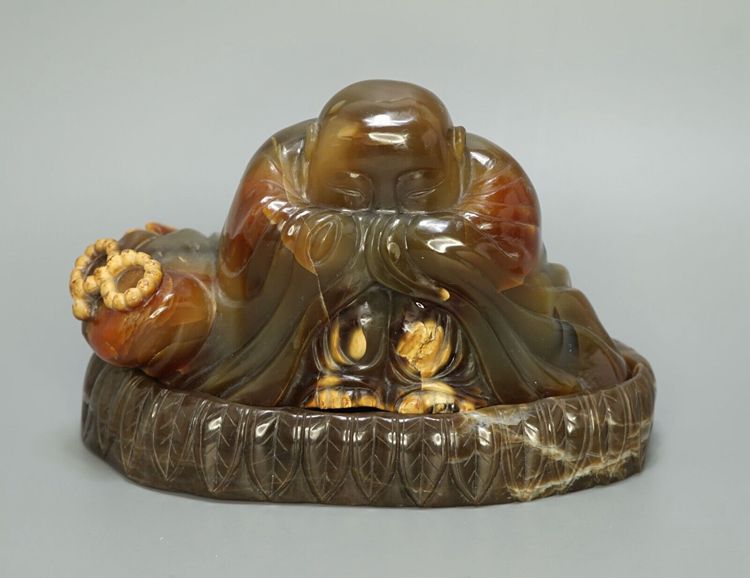
10. Antique Chinese Jade Woman with Fan Figurine Statue Jadeite Qing Dynasty sold for $100.00
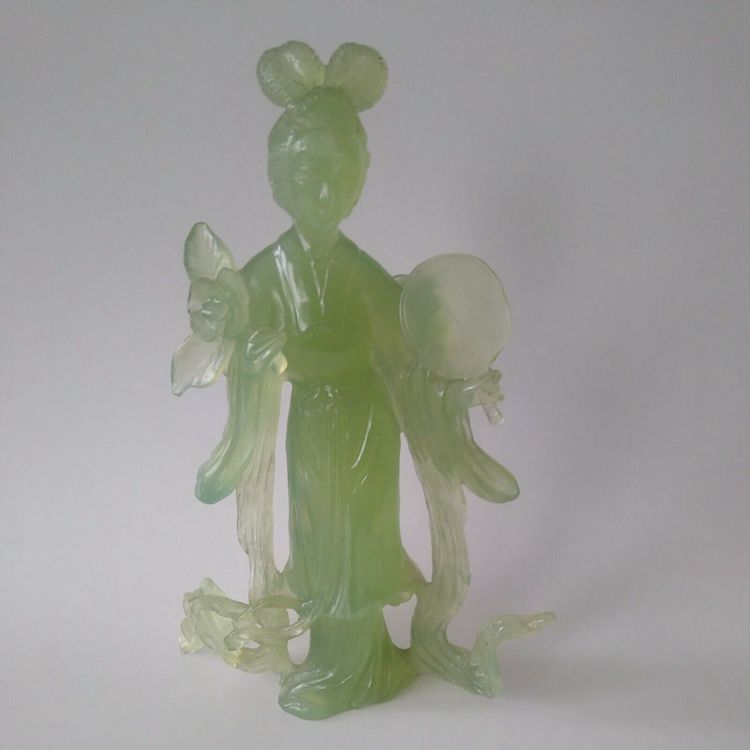
11. Rare Tall Antique Chinese Export Figurine Mud Woman sold for $177.50
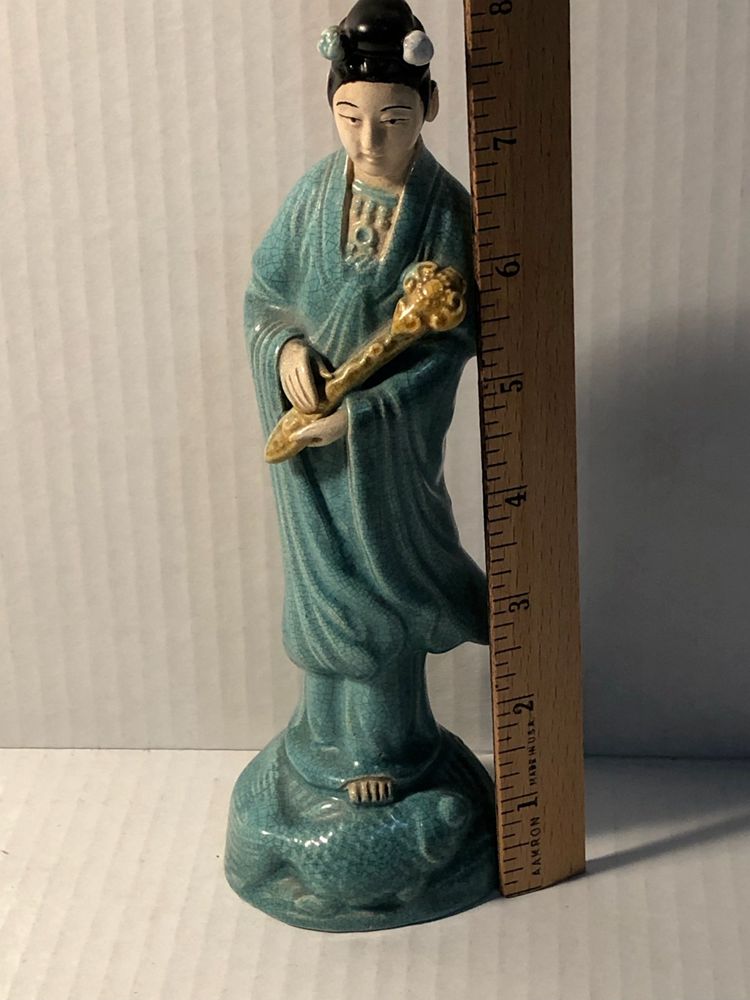
12. Antique Chinese Ming Dynasty Period Statue Figurine with Ming Mark sold for $159.00
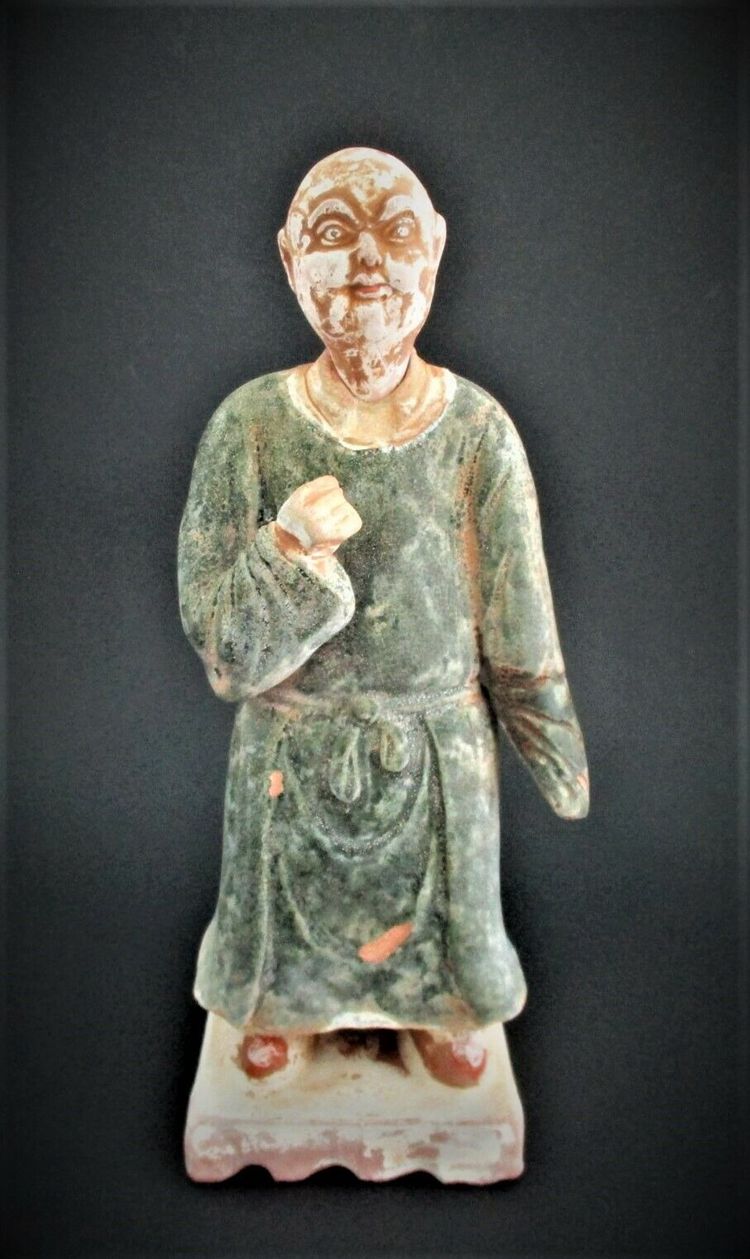
13. Chinese White Porcelain Ceramics Kung Fu Junior Figurine Statue sold for $85.99
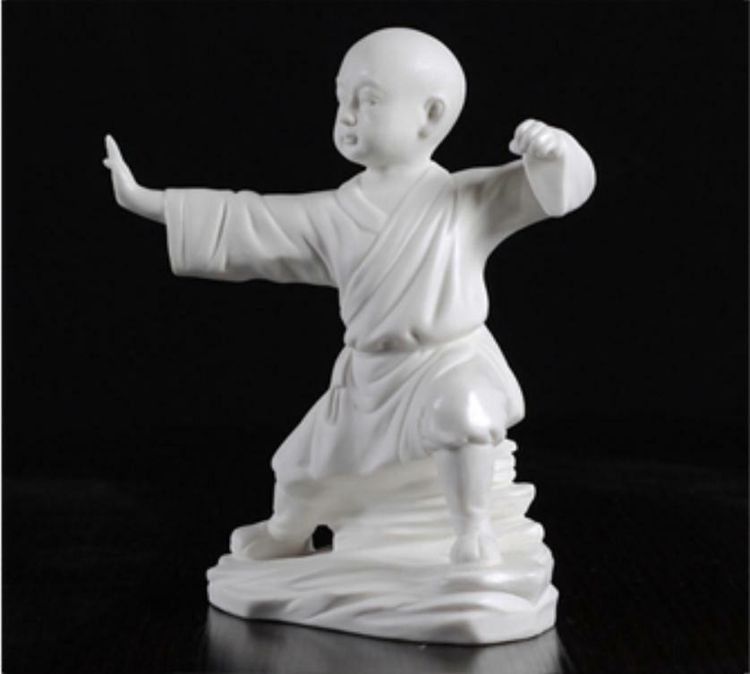
14. ANTIQUE PAIR CHINESE TURQUOISE BLUE GOOSE OR DUCK FIGURINES Signed or Marked sold for $299.00
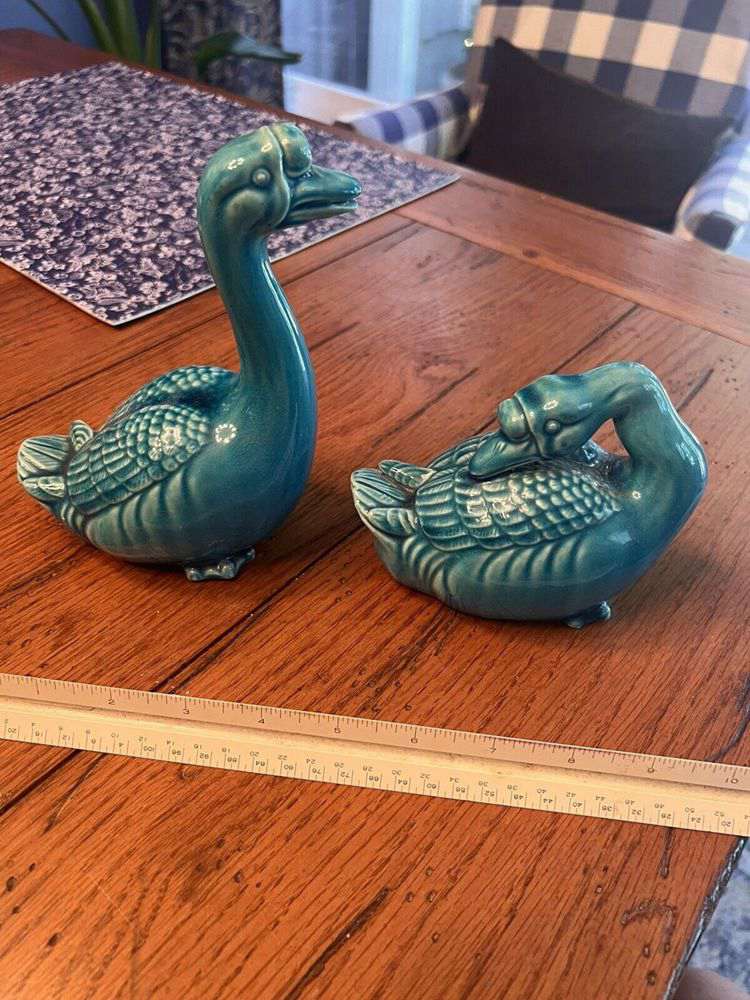
15. 19TH C. PR OF SIGNED CHINESE IVORY FIGURINES sold for $1,100
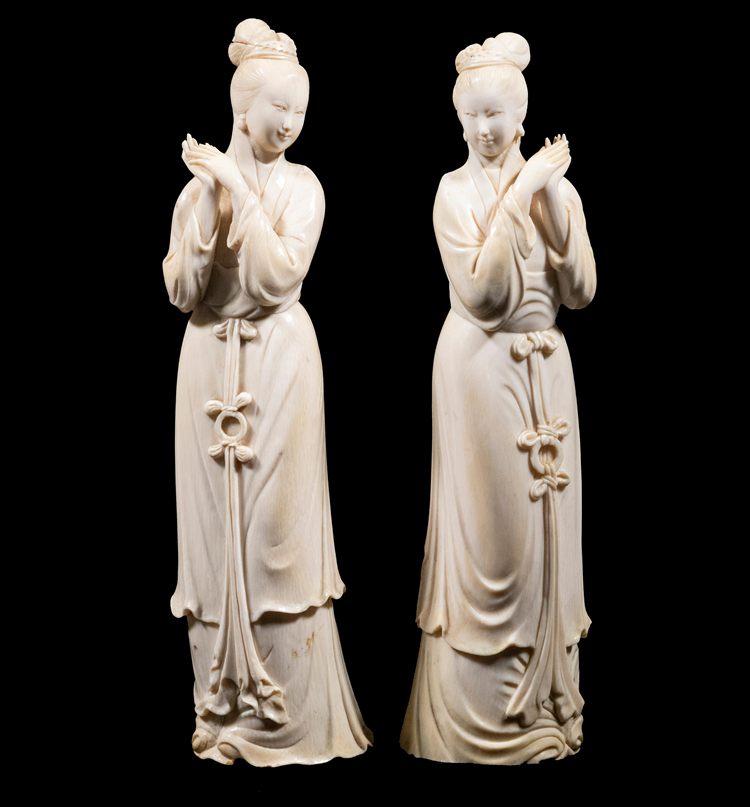
Where to buy these Antique Chinese Figurines Online?
Searching online is your best option if you need to find one immediately. Consider the following sites:
- e-Bay– The Antique Chinese figurines of your dreams can be easily found on eBay, one of the greatest sites to find beautiful Antique collectibles. It’s also ideal if you’re considering selling because they provide a very user-friendly e-commerce feature and can reach a sizable global audience.
- Etsy– Since people frequently discover these different Vintage Chinese figurines items in their grandparents’ homes across the nation, internet marketplaces like Etsy are among the greatest places to find a ton of these pieces on sale.
- Ruby lane– This online antique store offers a wide range of Oriental figurines, from old items from the 1960s to priceless antiquities.
- 1stDibs– A variety of stunning old and antique Chinese figurines are available on this website.
- Other Auction Sites– Anywhere in the world, there are auction houses, and each one is unique in terms of the type of goods it specialized in, the price range, the types of people it serves, and the way it does business. Liveactioneers and other auction sites where you can find your vintage items.
Guidelines to collect the Chinese Figurines
Here are some guidelines to think about if you would like to begin collecting figurines, especially Chinese figurines:
-
Start amassing antiques in accordance with your interests
To begin with, collecting collectibles is a hobby. While some people collect various items for their monetary value, it is best to only gather things you genuinely love and cherish. Collect the Chinese miniatures that appeal to you visually or intellectually! Naturally, the financial worth of your collection should be taken into account, but don’t allow it override your enthusiasm as a collector.
-
To conduct thorough research and avoid scams, seek out experts
Any expert collector will advise you that conducting thorough research is one of the most crucial steps to take. You must educate yourself as much as you can and become acquainted with the things you collect.
There are several aspects of a Chinese figurine that can be researched, including its background and place of creation, color scheme, shape, and any maker stamps that may be present. You’ll be able to tell the real from the phony this way, protecting yourself against fake artists or scammers.
-
Collecting collectibles is not a quick process rather it takes time
In their haste to stock their shelves with as many pieces as they can, beginning collectors frequently make the error. In the long run, doing that is likely to result in you having a lot of useless parts and spending a lot of money in vain.
Choose what you want to explicitly acquire instead. In the case of Chinese figurines, they may be ivory statues of Chinese emperors or clay figures from a specific time period. If you discover a new piece, think about its value, condition, and compatibility with your collection’s theme.
Frequently Asked Questions about Chinese Figurines
-
What material do Chinese figurines made of?
Tiger’s eye, coral, jade, ivory, and other valuable or semi-precious materials are used to create a variety of exquisite oriental sculptures. Usually made by hand, these figures may or may not have had color applied to them to improve the appearance. Asian figural art frequently utilized soapstone as a material.
-
When did jade carvings become a significant form of Chinese art?
After that, jade continued to be the sole property of the royal imperial families for a very long time. Jade carving has been regarded as a major art form since the Song Dynasty (960–1279), reaching its peak during the Ming Dynasty (1368–1644), when another famous world art form, blue and white painting, was created.
-
How do you know if a figurine is made of porcelain?
Examining the piece will help you distinguish porcelain figurines from earthenware or stoneware figurines. Porcelain or ceramic figurines are not transparent, whereas porcelain figurines have a fine, fragile aspect to them.
-
How do you determine the worth of a figurine?
Condition is frequently the deciding factor in value. In other words, value increases as circumstance does. The value of a figurine will also depend on its rarity, age, and quality in addition to those factors.
-
How can you tell if a figurine is genuine?
You should unquestionably anticipate seeing an authenticity sticker on a figure if it came with one from the maker. But it’s important to remember that a manufacturer could not always be precise with seals.
Our Takeaway
If you recently purchased or are considering buying an antique Chinese figurine. Whatever the situation, you can find out how much a Chinese figurine is worth by using our guide on identifying and appraising them. However, we strongly advise you to visit a professional appraiser if you want to fully understand the worth and value of your antique Chinese figurines.
Conclusion
Asian art is fascinating and valuable, ranging from the prehistoric dogu sculptures that show feminine forms to the Tang era burial figures. But before you invest, do your homework and consult a licensed appraiser. Make sure you are purchasing a genuine item of Oriental art heritage.
Among the most popular China wares are Chinese figurines. They give us a glimpse into the way of life and culture of Asian people hundreds of years ago because they were crafted by both amateur and expert craftsmen. Not need to say that they are a fantastic alternative for any decorating style.
Make sure to conduct extensive study and consider some of the advice we offer if you’re thinking about beginning your own collection of Chinese figurines. Nevertheless, go out there and start searching for some old Chinese figurines to add to your collectibles. You never know what kind of surprising fortune you might come into!

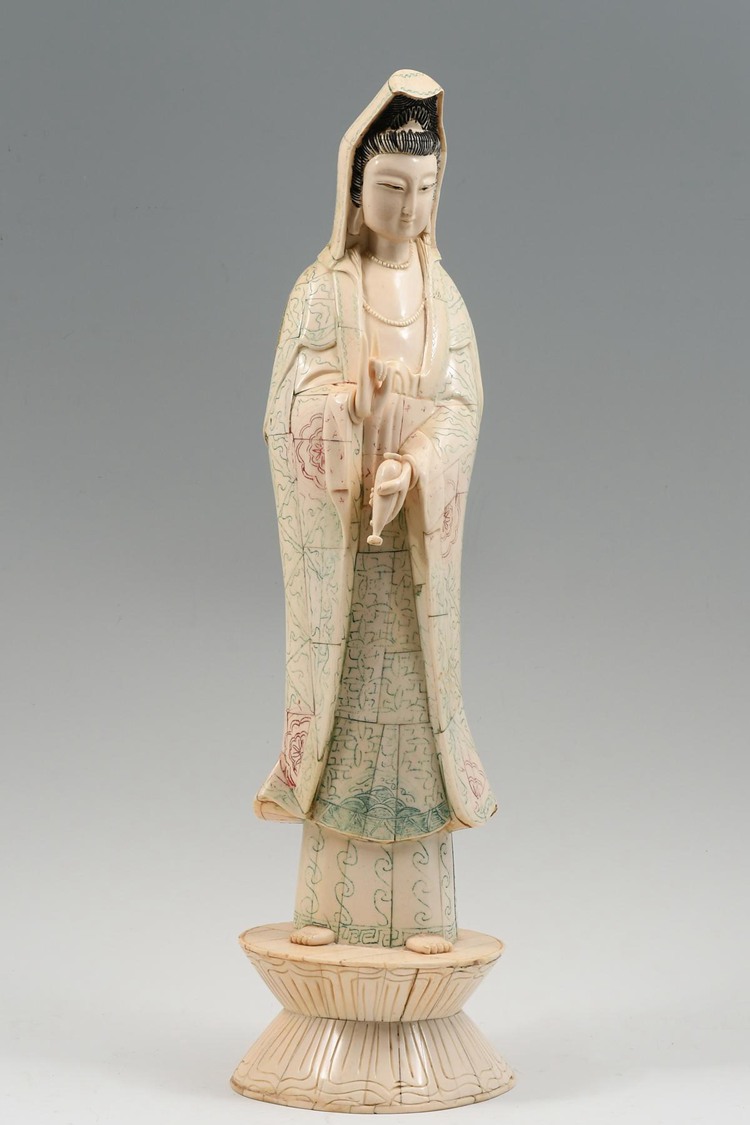




![Where To Sell Antique Furniture In 2022 [Ultimate Guide]](https://www.jacquelinestallone.com/wp-content/uploads/2022/09/Etsy-Your-Place-To-Buy-And-Sell-All-Things-Handmade-600x450.jpg)


